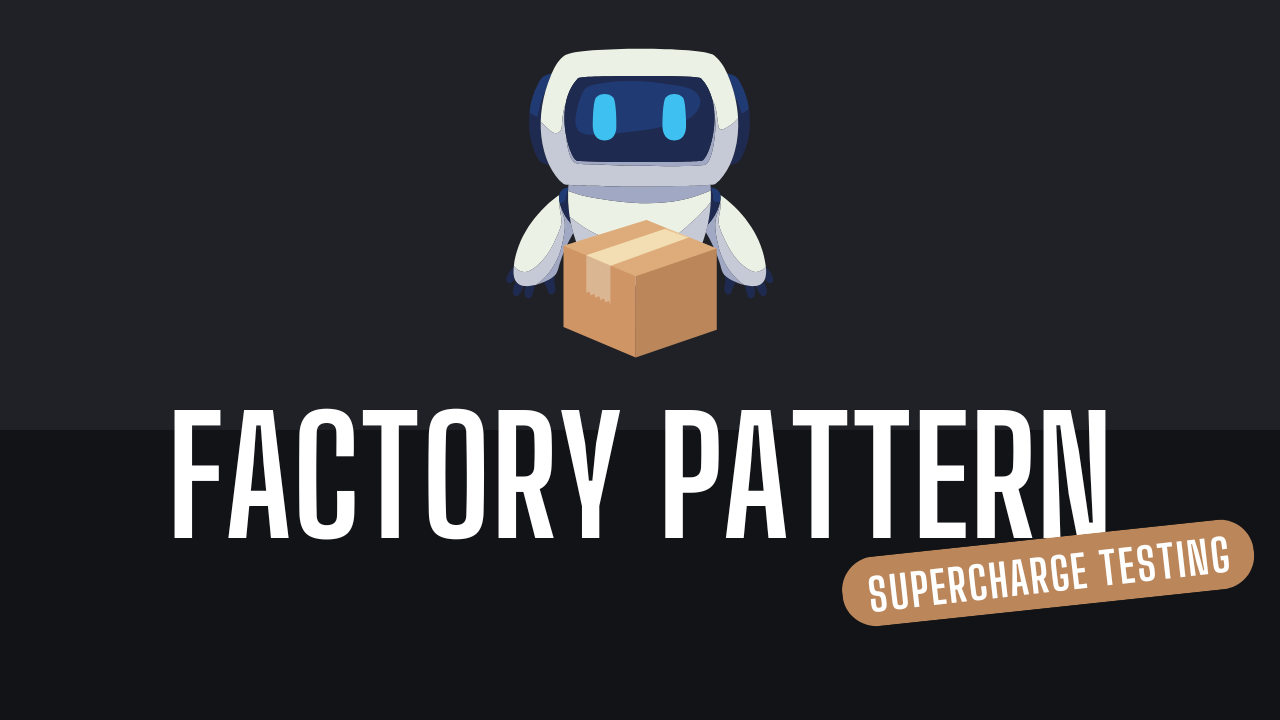How the Factory Pattern Supercharged My Tests (And Why You Should Use It)

Introduction
Writing tests can be frustrating. Whether it’s duplicated setup code, brittle test data, or painful refactoring, we've all been there. When I started using the Factory pattern in my test suite, everything changed. Suddenly, my tests were cleaner, easier to maintain, and much more flexible.
I’m addicted to factories now, and in this post, I’ll show you why and how they can supercharge your tests too.
What Is the Factory Pattern?
The Factory pattern is a design pattern that encapsulates object creation in a way that makes it easy to generate instances of objects dynamically. Instead of manually instantiating objects in your tests, you delegate that responsibility to a factory function.
✅ Without a Factory:
const user = {
id: 1,
name: "John Doe",
email: "john@example.com",
role: "admin",
};✅ With a Factory:
const createUser = (overrides = {}) => ({
id: Math.floor(Math.random() * 1000),
name: "John Doe",
email: "john@example.com",
role: "admin",
...overrides,
});
const user = createUser();
const guestUser = createUser({ role: "guest" });With one function, you can generate consistent yet customizable test data on the fly! 🚀
Why Factories Make Tests Better
1️⃣ No More Repetitive Setup
Instead of writing the same hardcoded test objects in every test case, you create them dynamically:
const user1 = createUser();
const user2 = createUser({ role: "editor" });2️⃣ DRY and Scalable
If a new field is added to the user model, you only update the factory instead of fixing hundreds of tests.
const createUser = (overrides = {}) => ({
id: Math.floor(Math.random() * 1000),
name: "John Doe",
email: "john@example.com",
role: "admin",
isActive: true, // New field!
...overrides,
});Now, all tests using createUser() get the update automatically. 🔥
3️⃣ Flexible and Maintainable Tests
Need randomized or dynamic test data? No problem:
const createUser = () => ({
id: Math.floor(Math.random() * 1000),
name: faker.name.findName(),
email: faker.internet.email(),
role: sample(["admin", "editor", "guest"]),
});4️⃣ Works Seamlessly with Mocks & Stubs
Factories reduce dependency on complex mocks. Instead of mocking entire repositories or APIs, you create structured test data with a factory and stub only where needed.
jest.spyOn(userRepository, "findById").mockResolvedValue(createUser());Before & After: A Real-World Example
❌ Before: Messy, Hardcoded Test Data
test("should create a user", () => {
const user = {
id: 1,
name: "John Doe",
email: "john@example.com",
role: "admin",
};
const result = userService.create(user);
expect(result).toEqual(user);
});✅ After: Clean, Factory-Based Test
test("should create a user", () => {
const user = createUser();
const result = userService.create(user);
expect(result).toEqual(user);
});🔥 Less code, same clarity, more flexibility!
When (and When Not) to Use Factories in Testing
✅ Use Factories When:
- Your test data is repetitive and needs variations.
- You frequently add new fields to objects.
- Your tests depend on mocks or stubs that return structured data.
❌ Factories Might Be Overkill When:
- You only need one or two simple test objects.
- The structure of your test data rarely changes.
Conclusion: Factories Make Testing Fun Again 🎉
Since adopting the Factory pattern, my tests have become easier to read, faster to write, and more scalable. No more manually creating test data, no more massive refactors, and no more brittle mocks!
💡 Key takeaways: ✅ The Factory pattern removes duplication in test setup.
✅ It makes tests flexible and future-proof.
✅ It plays nicely with mocks, stubs, and randomized test data.
If you haven’t used factories in your tests yet, give it a shot—you might just get addicted like me! 🚀
👉 Have you used the Factory pattern in testing? What’s your experience? Let’s discuss in the comments!